Machine Learning is Fun Part 7: Abusing Generative Adversarial Networks to Make 8
The goal of Generative Models
So why exactly are AI researchers building complex systems to generate slightly wonky-looking pictures of bedrooms?
The idea is that if you can generate pictures of something, you must have an understanding of it.
Look at this picture:


You instantly know this is a picture of a dog — a furry thing with four legs and a tail. But to a computer, the picture is just a grid of numbers representing the color of each pixel. The computer has no understanding that the picture represents a concept.
But now imagine that we showed a computer thousands of pictures of dogs and after seeing those pictures, the computer was able to generate new pictures of dogs on its own — including different dog breeds and pictures from different angles. Maybe we could even ask it for certain types of pictures, like “a side view of a beagle”.
If the computer was able to do this and the pictures it produced had the right number of legs, tails, and ears, it would prove that the computer knows what parts go into making up a “dog” even though no one told it explicitly. So in a sense, a good generative model is proof of basic understanding — at least on a toddler-level.
That’s why researchers are so excited about building generative models. They seem to be a way to train computers to understand concepts without being explicitly taught the meaning of those concepts. That’s a big step over current systems that can only learn from training data that has been painstakingly pre-labeled by humans.
But if all this research results in programs that generate pictures of dogs, how many years until we get the first computer-generated Dog-A-Day calendar as a side effect?

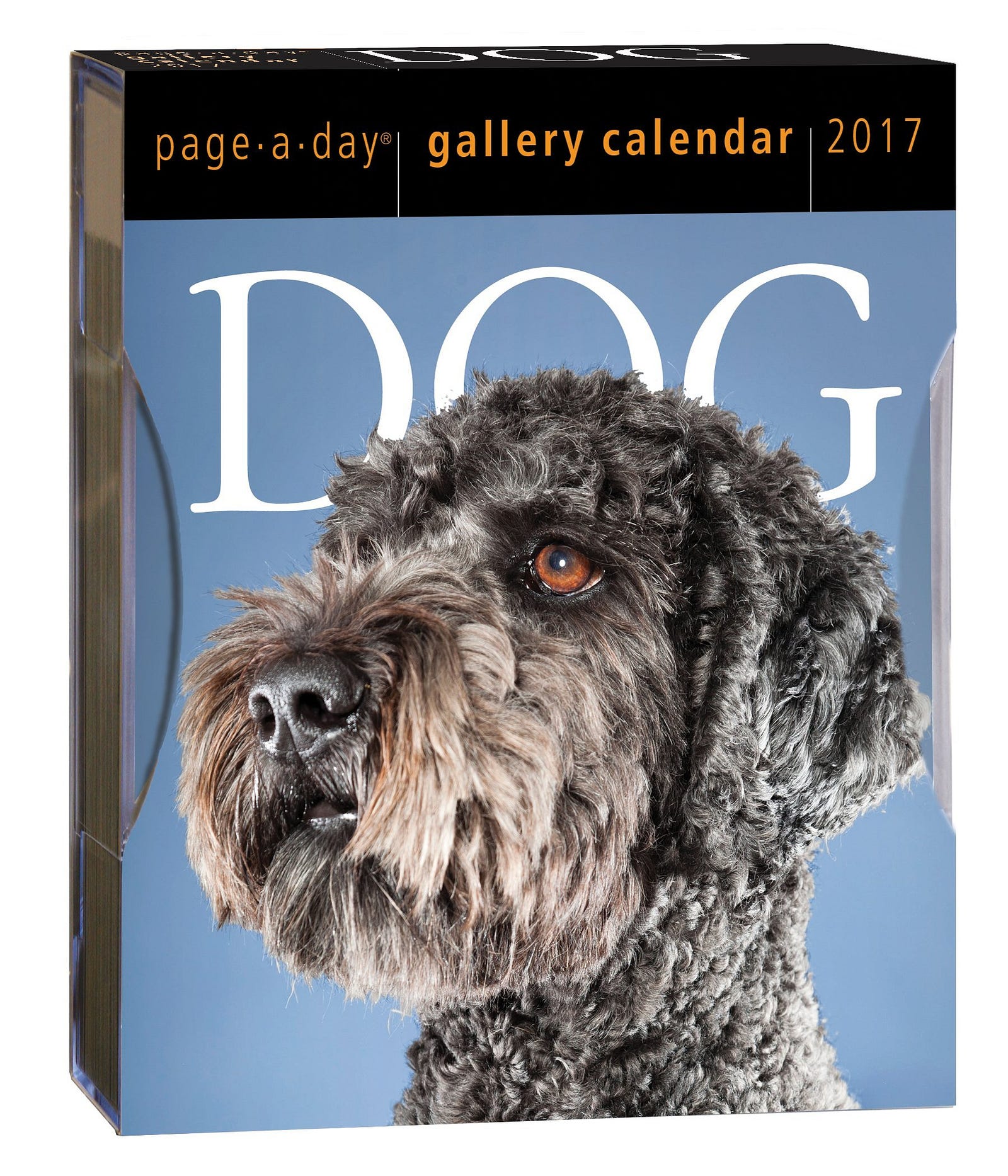
And if you can build a program that understands dogs, why not a program that understands anything else? What about a program that could generate an unlimited number of stock photos of people shaking hands? I’m sure someone would pay for that.


Ok, maybe a program that generates bad stock photos wouldn’t be that interesting. But given the rate of progress in generative models over just the past year, who knows where we’ll be in 5 or 10 years. What happens if someone invents a system to generate entire movies? Or music? Or video games?
If you look forward 20–30 years and squint, you can already imagine a world where entertainment could be 100% machine generated:
The video game industry is the first area of entertainment to start seriously experimenting with using AI to generate raw content. Aside from the obvious Venn diagram overlap between computer gaming and machine learning engineers, there’s a huge cost incentive to invest in video game development automation given the $300+ million budgets of modern AAA video games.
We are still in the earliest days of machine-learning-based generative models and their practical uses are currently pretty narrow, but they are a lot of fun to play around with. Let’s see what we can do with one.
How DCGANs work
To build a DCGAN, we create two deep neural networks. Then we make them fight against each other, endlessly attempting to out-do one another. In the process, they both become stronger.
Let’s pretend that the first deep neural network is a brand new police officer who is being trained to spot counterfeit money. It’s job is to look at a picture and tell us if the picture contains real money.
Since we are looking for objects in pictures, we can use a standard Convolutional Neural Network for this job. If you aren’t familiar with ConvNets, you can read my earlier post. But the basic idea is that the neural network that takes in an image, processes it through several layers that recognize increasingly complex features in the image and then it outputs a single value—in this case, whether or not the image contains a picture of real money.
This first neural network is called the Discriminator:


Now let’s pretend the second neural network is a brand new counterfeiter who is just learning how to create fake money. For this second neural network, we’ll reverse the layers in a normal ConvNet so that everything runs backwards. So instead of taking in a picture and outputting a value, it takes in a list of values and outputs a picture.
This second neural network is called the Generator:


So now we have a police officer (the Discriminator) looking for fake money and a counterfeiter (the Generator) that’s printing fake money. Let’s make them battle!
In the first round, the Generator will create pathetic forgeries that barely resemble money at all because it knows absolutely nothing about what money is supposed to look like:


But right now the Discriminator is equally terrible at it’s job of recognizing money, so it won’t know the difference:


At this point, we step in and tell the Discriminator that this dollar bill is actually fake. Then we show it a real dollar bill and ask it how it looks different from the fake one. The Discriminator looks for a new detail to help it separate the real one from the fake one.
For example, the Discriminator might notice that real money has a picture of a person on it and the fake money doesn’t. Using this knowledge, the Discriminator learns how to tell the fake from the real one. It gets a tiny bit better at its job:


Now we start Round 2. We tell the Generator that it’s money images are suddenly getting rejected as fake so it needs to step up it’s game. We also tell it that the Discriminator is now looking for faces, so the best way to confuse the Discriminator is to put a face on the bill:


And the fake bills are being accepted as valid again! So now the Discriminator has to look again at the real dollar and find a new way to tell it apart from the fake one.
This back-and-forth game between the Generator and the Discriminator continues thousands of times until both networks are experts. Eventually the Generator is producing near-perfect counterfeits and the Discriminator has turned into a Master Detective looking for the slightest mistakes.
At the point when both networks are sufficiently trained so that humans are impressed by the fake images, we can use the fake images for whatever purpose we want.
Applying this to Video Games
So now that we know how DCGANs work, let’s see if we can use one to generate new artwork for 1980s-style video games.
Let’s build a DCGAN that tries to produce screenshots of imaginary video games for the Nintendo Entertainment System (or NES) based on screenshots of real games:

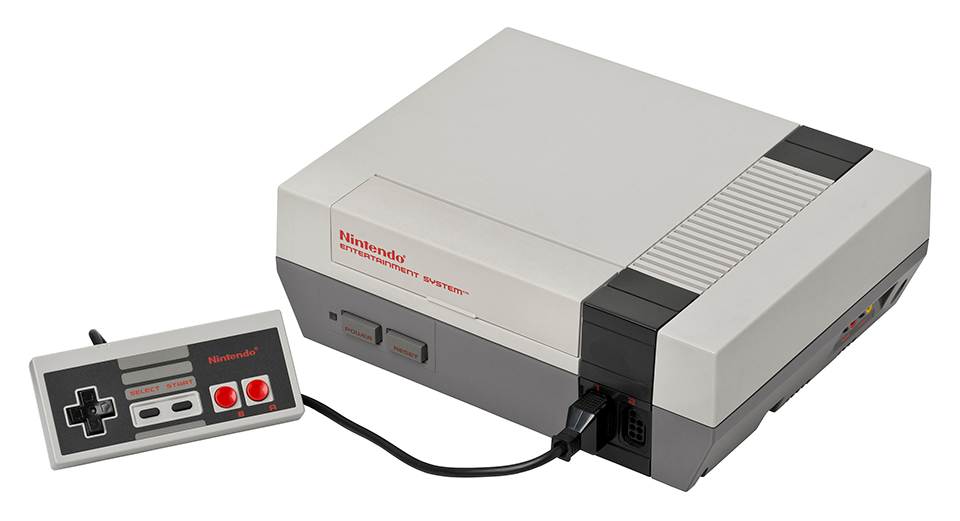
The idea is that if we can generate convincing screenshots of imaginary video games, we could copy and paste bits of art from those screenshots and use it in our own retro-style video game. Since the generated video games never existed, it wouldn’t even be stealing (Maybe... more on this later).
Video game art in those days was very simple. Since the NES had such a small amount of memory (the games used way less memory than this article takes up!), programmers had to use lots of tricks to fit the game art into memory. To maximize the limited space, games used tile-based graphics where each screen in the game is made up of just a few (usually 16x16 pixel) repeated graphical tiles.
For example, the starting screen of ‘The Legend of Zelda’ is made up of only 8 unique tiles:


Here are the tiles for entire ‘The Legend of Zelda’ game map:


Our goal is to create a similar tile sheet for our game. Because of that, we don’t really care if the game screenshots we generate look completely realistic. Instead, we’re just looking for the shapes and patterns that we can use as 16 x 16 tiles in our game — things like stones, water, bridges, etc. Then we can use those tiles to build our own 8-bit-style video game levels.
Getting Data
To train our system, we need lots of data. Luckily there are over 700 games for the NES that we can pull from.
I used wget to download all the NES game screenshots on The Video Game Museum website (sorry for scraping your site!). After a few minutes of downloading, I had a little over 10,000 screenshots of hundreds of NES games:

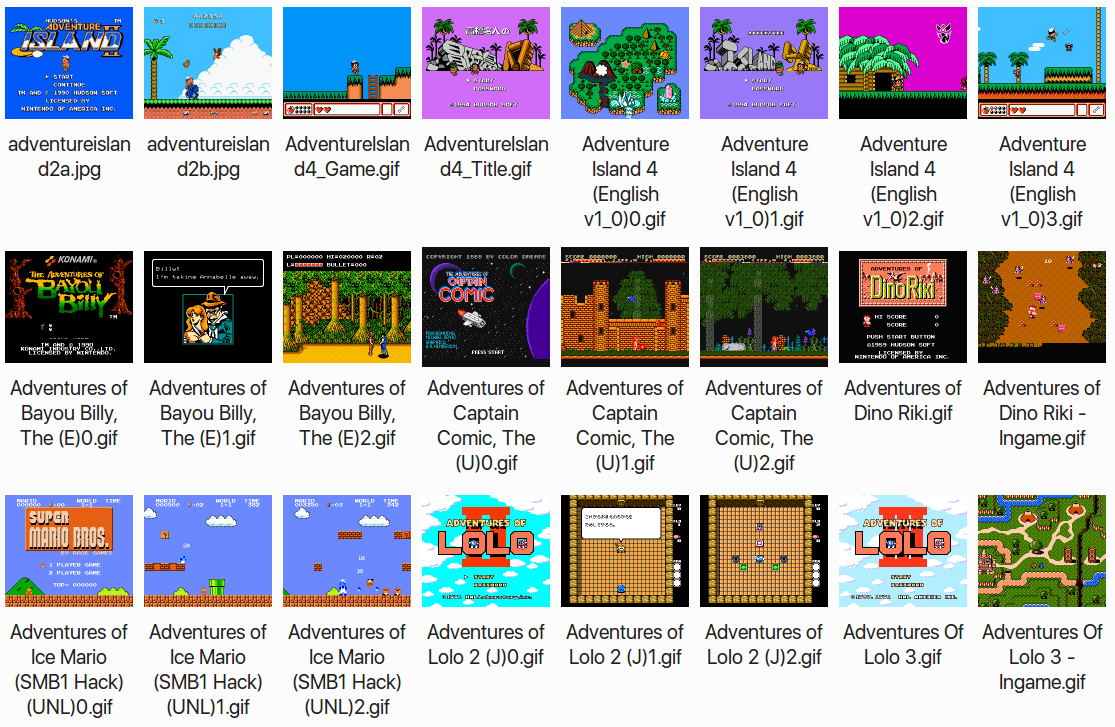
Right now, DCGANs only work on pretty small images — 256 pixels square or so. But the entire screen resolution of the NES was only 256 pixels by 224 pixels, so that’s not a problem. To make things simple, I cropped each NES screenshot to 224 pixels square.
Setting up the DCGAN
There are several open-source implementations of DCGANs on github that you can try out. I used Taehoon Kim’s Tensorflow implementation. Since DCGANs are unsupervised, all you have to do is put the data in a folder, tweak the basic parameters, start it training and then wait to see what results you get.
Here’s what a sample of the original training data looks like:


Now training begins. At first, the output from the Generator is pure noise. But it slowly start to take shape as the Generator learns to do a better job:


After several more training rounds, the images start to resemble nightmare-ish versions of classic Nintendo games:
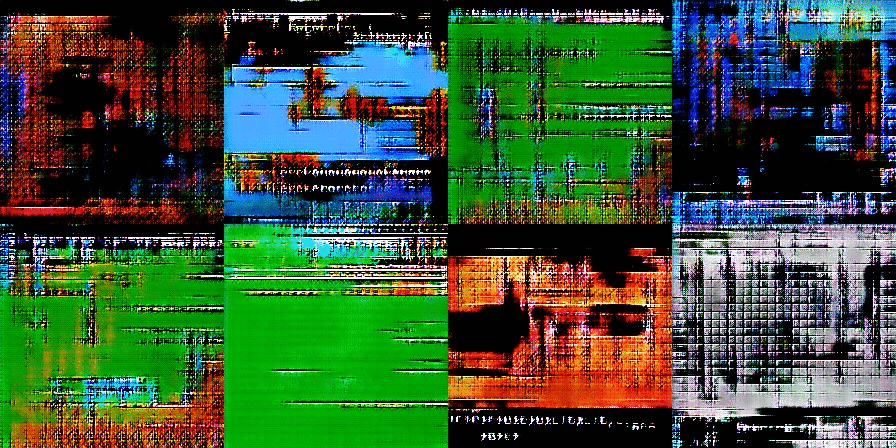

As training continues further, we start to see the bricks and blocks we are hoping to find. You can also see screen elements like life bars and even some text:

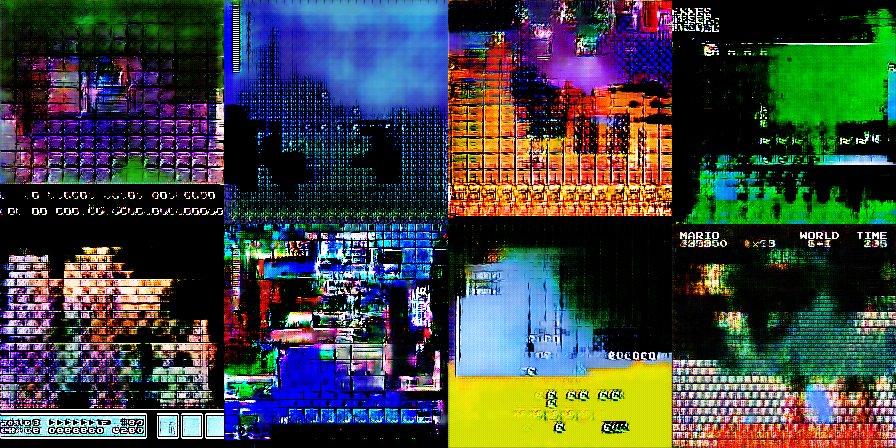
This is where things get complicated. How do we know the computer is creating brand new art and not just regurgitating art directly from the training images? In two of these images, you can clearly see the menu bar from Super Mario Bros. 3 and the header bar and bricks from the original Super Mario Bros.
Regurgitating training data is definitely something that can happen. By using a large training data set and not training too long, we can try to reduce the chance that this happens. But it’s a thorny issue and research on it continues.
Since I’m just going for aesthetics, I tweaked the model until it produced art that looked original to me. But I can’t prove that the new art is totally original except by searching the training data for similar art and verifying that there isn’t any.
With a few hours of training, the generated images contained 16 x 16 tiles that looked nice to me. I was looking for some variations on a basic stone block, brick patterns, water patterns, bushes, and some general “spooky-looking” background atmosphere tiles.
Next I need to pre-process the generated images to the make sure they only used the 64 colors that are available on the NES:


Then I’ll open up the 64-color images in the Tiled Map Editor. From there, I can easily grab the 16 x 16 tiles that match the aesthetic I want:

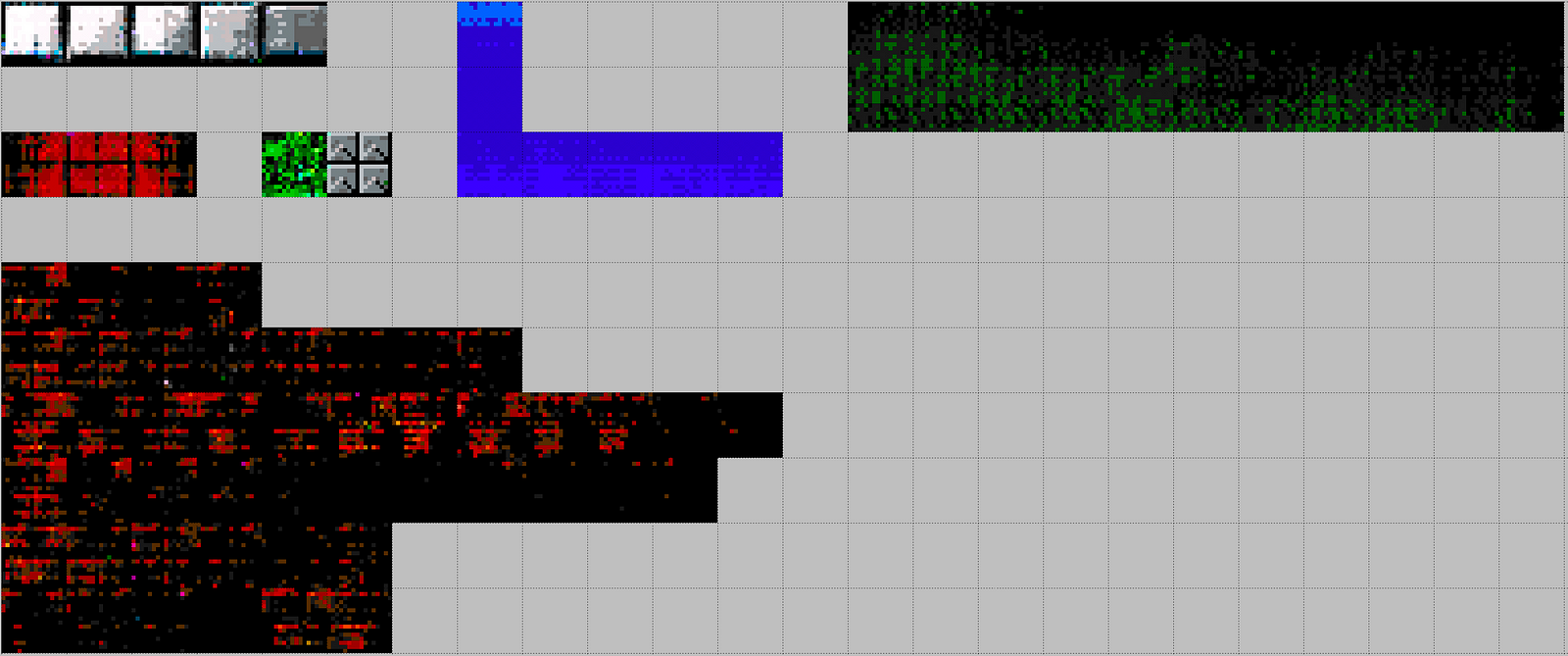
Then inside of Tiled Map Editor, I’ll arrange those 16 x 16 tiles into a simple level layout reminiscent of the NES game ‘Castlevania’:
